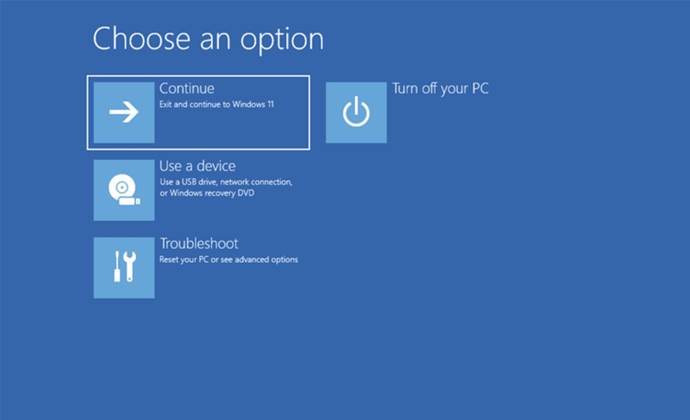Microsoft Researchers Uncover “BitUnlocker” Full-Volume Encryption Workaround
We independently review everything we recommend. When you buy through our links, we may earn a commission which is paid directly to our Australia-based writers, editors, and support staff. Thank you for your support!

Quick Overview
- Researchers at Microsoft identified security flaws in the Windows Recovery Environment (WinRE) that may allow for circumvention of BitLocker encryption.
- The security issues were referred to as “BitUnlocker” by the STORM team at Microsoft.
- Four methods of attack exploited the trust established between BitLocker and WinRE.
- The vulnerabilities enabled attackers to boot unverified recovery environments, gaining unrestricted access to encrypted volumes.
- Microsoft resolved these issues in July 2025, suggesting enhanced security measures such as using TPM with a PIN.
BitUnlocker: A Newly Emerged Security Concern
The Security Testing and Offensive Research at Microsoft (STORM) team has revealed vulnerabilities in the Windows Recovery Environment (WinRE) that permit attackers to circumvent BitLocker encryption. This finding, dubbed “BitUnlocker,” showed four methods of attack that took advantage of the trust between BitLocker and WinRE, enabling physical access device attackers to override encryption safeguards.
The Central Problem: WinRE’s Auto-Unlock Feature
The vulnerabilities arise from WinRE’s “auto-unlock” feature, which provides full access to encrypted volumes during recovery processes. Although these recovery processes are essential for system restoration, they unintentionally introduced new attack vectors.
Identified Attack Methods
The STORM team discovered four separate attack methods, each with a distinct CVE identifier. The first vulnerability, CVE-2025-48804, exploited the way WinRE handles System Deployment Image (SDI) files. Attackers could append malicious Windows images to legitimate Boot.sdi files to circumvent integrity checks.
Two vulnerabilities related to ReAgent.xml parsing, CVE-2025-48800 and CVE-2025-48003, offered alternative means of attack. These vulnerabilities involved the misuse of legitimate tools and hotkey combinations to access encrypted volumes.
Full Volume Decryption Capability
The most critical vulnerability, CVE-2025-48818, facilitated the total decryption of BitLocker-protected volumes through the manipulation of Boot Configuration Data (BCD) stores. This exploit utilized a combination of multiple techniques to achieve devastating effects.
Countermeasures and Patching
To mitigate these vulnerabilities, Microsoft suggests activating the Trusted Platform Module (TPM) with a personal identification number (PIN) for pre-boot authentication. This approach emphasizes hardware security, thereby minimizing software attack surfaces. Furthermore, the REVISE mitigation strategy is in place to thwart BitLocker downgrade attacks.
All detected vulnerabilities were addressed in Microsoft’s July 2025 security updates. This discovery was also showcased at significant security events, such as Black Hat USA 2025 and DEF CON 33.
Conclusion
The identification of the “BitUnlocker” vulnerabilities in WinRE by Microsoft underscores the necessity of securing recovery environments. By rectifying these weaknesses and suggesting improved security protocols, Microsoft seeks to shield users from possible encryption circumvention. Maintaining hardware-level security and ensuring systems are current remains vital for the protection of data integrity.
Frequently Asked Questions
Q: What does “BitUnlocker” refer to?
A:
“BitUnlocker” refers to a set of vulnerabilities in the Windows Recovery Environment (WinRE) that might enable the circumvention of BitLocker encryption, as labeled by Microsoft’s STORM team.
Q: In what way do these vulnerabilities impact BitLocker encryption?
A:
The vulnerabilities exploit the trust dynamics between BitLocker and WinRE, enabling attackers with physical access to devices to bypass encryption and penetrate encrypted volumes.
Q: What measures were taken to address these vulnerabilities?
A:
Microsoft corrected these vulnerabilities through security updates in July 2025. They also recommend activating TPM with PIN and utilizing the REVISE mitigation to bolster security.
Q: What security measures are advised?
A:
It is advised to implement a Trusted Platform Module (TPM) with a personal identification number (PIN) for pre-boot verification, alongside applying the REVISE mitigation strategy to prevent BitLocker downgrade attempts.
Q: Were the vulnerabilities made public?
A:
Indeed, the vulnerabilities and their potential impact were discussed at both the Black Hat USA 2025 and DEF CON 33 security conferences.
